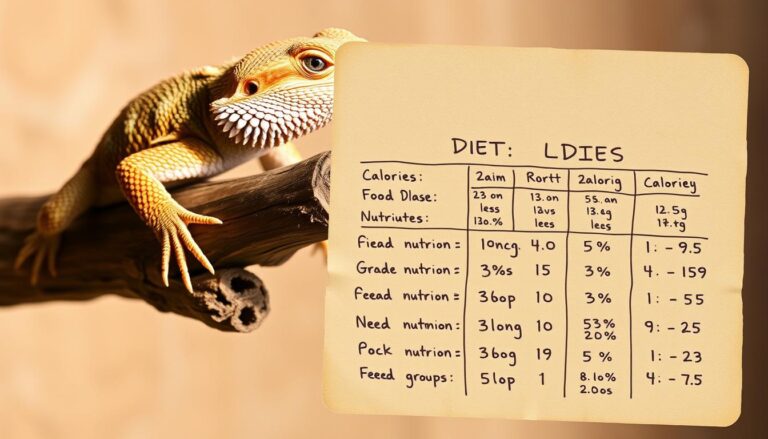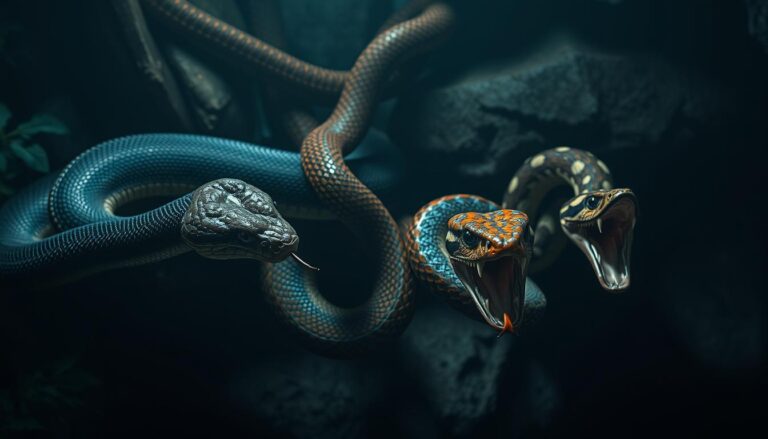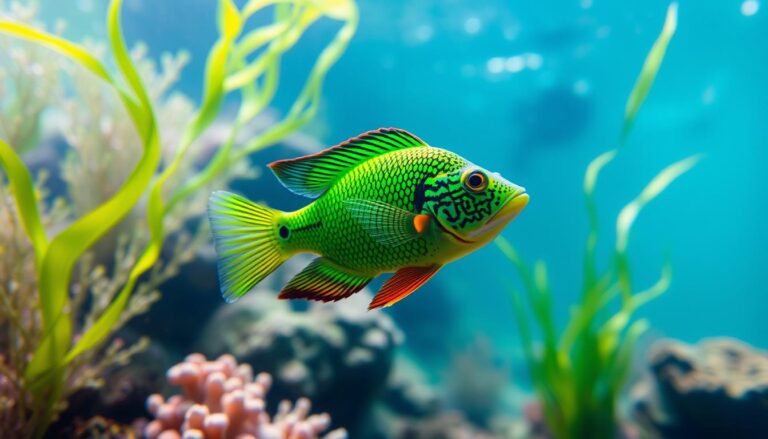Common Bearded Dragon Illnesses: A Helpful Guide
Learn about common bearded dragon illnesses, their symptoms, and treatment options to ensure your pet’s well-being and longevity.
Keeping reptiles healthy requires attention to detail and proactive care. For bearded dragons, understanding potential health risks is essential to ensuring a long and thriving life. These pets can live over a decade with proper care, but they are susceptible to issues like respiratory infections and metabolic bone disease.
Early symptom recognition is critical. Many health problems stem from preventable husbandry errors, such as improper diet or habitat conditions. A 2023 AVMA report highlights a 40% increase in exotic pet veterinary visits, underscoring the need for better awareness and care practices.
This guide will explore key topics, including symptom identification, dietary essentials, and habitat optimization. By focusing on preventive measures, owners can significantly improve their pet’s quality of life and longevity.
Key Takeaways
- Proactive health monitoring is vital for captive reptiles.
- Early symptom recognition can prevent serious health issues.
- Proper diet and habitat conditions are essential for prevention.
- Respiratory infections and metabolic bone disease are common risks.
- Veterinary visits for exotic pets are on the rise.
Introduction to Bearded Dragon Health
Proper care for this species starts with knowing their unique physiological needs. A healthy pet requires a well-balanced environment, proper diet, and regular health checks. Understanding these basics is key to ensuring their well-being.
Thermoregulation is critical for this species. They need a basking zone of 95-110°F and a cooler area of 75-85°F. UVB lighting with 10-12% output is essential for calcium absorption and overall health.

An ideal body condition includes a weight range of 300-600g for adults and a resting heart rate of 60-80 BPM. Regular health checks should include fecal exams, bloodwork, and radiographs to detect potential issues early.
This species also has unique biological rhythms, such as brumation cycles. These periods of reduced activity are natural and should be monitored closely. The Association of Reptilian and Amphibian Veterinarians provides care standards to guide owners in maintaining optimal health.
- Maintain proper thermoregulation with a basking zone and cooler area.
- Ensure UVB lighting for calcium absorption.
- Monitor weight and heart rate for ideal body condition.
- Schedule annual health checks, including fecal exams and bloodwork.
- Understand and monitor brumation cycles.
Signs of a Healthy Bearded Dragon
Recognizing the indicators of good health ensures a thriving pet. A healthy reptile exhibits clear eyes, firm musculature, and active tongue flicking. These signs reflect overall well-being and proper care.
Appetite is another critical factor. Juveniles should consume a diet of 80% insects and 20% vegetables. Adults, on the other hand, thrive on a 50/50 balance. Regular eating habits are a positive sign of health.

Proper hydration is vital. A simple test involves gently pinching the skin; if it retracts in less than two seconds, hydration levels are adequate. Dehydration can lead to serious health issues.
Shedding is a natural process. A healthy reptile will shed its skin fully every 4-6 weeks. Incomplete shedding may indicate underlying problems.
Basking behavior is also a key indicator. Healthy reptiles spend 4-6 hours daily under a heat source. This helps regulate body temperature and aids digestion.
Finally, coloration varies across 23 morph varieties. Normal ranges include vibrant hues and consistent patterns. Dull or patchy colors may signal health concerns.
Common Bearded Dragon Illnesses and Their Symptoms
Understanding health issues in reptiles can prevent serious complications. Early detection of symptoms is crucial for effective treatment. This section explores three major health concerns and their signs.
Respiratory Infections
Respiratory infections often result from improper habitat conditions. Symptoms include wheezing, mucus discharge, and lethargy. Maintaining proper humidity and temperature levels can reduce the risk.
Metabolic Bone Disease
This condition stems from calcium deficiency or inadequate UVB exposure. Signs include soft jaws, swollen limbs, and difficulty moving. Providing a balanced diet and proper lighting is essential for prevention.
Impaction
Impaction occurs when a reptile’s digestive system is blocked. It is often caused by consuming large or indigestible items. Symptoms include lack of appetite, bloating, and inactivity. Abdominal palpation can help detect this issue early.
68% of impaction cases involve particle substrates. Mealworm chitin, for example, requires three times the normal digestion time. Owners should avoid high-risk foods like superworms, kale stems, and beetles.
In emergencies, a warm olive oil enema can help alleviate digestive blockage. Always consult a veterinarian before attempting this procedure.
| Safe Substrates | Dangerous Substrates |
|---|---|
| Tile | Calcium Sand |
| Reptile Carpet | Wood Chips |
Using a ZooMed feeding tank can minimize substrate risks. This setup ensures pets consume food without ingesting harmful particles.
Parasites and Infections in Bearded Dragons
Parasites and infections can significantly impact the health of captive reptiles. These issues often arise from poor habitat conditions or exposure to contaminated environments. Early detection and proper treatment are essential to prevent long-term complications.
Adenovirus
Adenovirus is a viral infection that can weaken the immune system. Symptoms include lethargy, weight loss, and digestive issues. While there is no cure, supportive care and a clean environment can help manage the condition.
Mites and Parasites
Mites and internal parasites are common threats. Oxyurid nematodes, for example, are found in 45% of captive populations. Regular fecal exams are crucial for early detection.
Mites often hide in hotspots like femoral pores and ear canals. Treatments such as ivermectin (0.2mg/kg) or Provent-a-Mite can effectively eliminate these pests. Fenbendazole and metronidazole are also reliable options for internal parasites.
- Identify mite hotspots: femoral pores, ear canals.
- Compare treatments: fenbendazole vs. metronidazole.
- Apply Provent-a-Mite as directed for safe results.
- Disrupt parasite life cycles with proper hygiene.
- Prevent zoonotic risks like salmonella through regular cleaning.
Maintaining a clean habitat and monitoring for signs of infestation are the best preventive measures. Always consult a veterinarian for accurate diagnosis and treatment plans.
Behavioral Changes and What They Mean
Behavioral changes in reptiles often signal underlying health or environmental issues. Recognizing these shifts early can help owners address problems before they escalate. For example, black bearding lasting more than 48 hours is a clear stress sign that requires immediate attention.
Glass surfing, where a reptile repeatedly rubs against enclosure walls, increases cortisol levels by 300%. This behavior often indicates dissatisfaction with habitat conditions. Owners should evaluate factors like enclosure size, temperature, and enrichment opportunities.
Decoding body language is essential for understanding a pet’s needs. Here are seven key signals to watch for:
- Head bobbing: Often a sign of dominance or mating behavior.
- Arm waving: A submissive gesture, especially in younger reptiles.
- Tail twitching: Can indicate excitement or irritation.
- Puffed-up body: A defensive posture signaling discomfort.
- Open-mouth breathing: May suggest overheating or respiratory issues.
- Hiding: Prolonged hiding can indicate stress or illness.
- Lethargy: A sign of potential health problems or inadequate habitat conditions.
Food refusal is another critical indicator. While occasional fasting is normal, prolonged refusal may point to digestive issues, parasites, or stress. Owners should track timelines and consult a veterinarian if necessary.
Aggression can be triggered by improper handling, especially during brumation. This natural period of reduced activity requires minimal interference. Pacing or vivarium escape attempts often signal enclosure size issues or environmental dissatisfaction.
“Understanding behavior is the first step to ensuring a pet’s well-being. Owners who observe and act on these signs can prevent many health issues.”
| Behavior | Potential Cause |
|---|---|
| Black Bearding | Stress, illness, or environmental discomfort |
| Glass Surfing | Inadequate enclosure size or enrichment |
| Food Refusal | Digestive issues, parasites, or stress |
| Aggression | Improper handling or brumation interference |
| Pacing | Enclosure size issues or environmental dissatisfaction |
By monitoring these behaviors and addressing underlying causes, owners can ensure their pets thrive in a healthy and supportive environment.
Diet and Nutrition for a Healthy Bearded Dragon
A balanced diet is the cornerstone of a thriving reptile’s health. For juveniles, protein is critical, with 80% of their meals consisting of live prey like crickets or dubia roaches. This ensures proper growth and development during their early stages.
Vitamins play a vital role in maintaining overall health. Key nutrients include calcium vitamin D3 for bone strength, B1 for energy metabolism, and A for vision and immune function. Supplements like Repashy Calcium Plus can help meet these needs.
Feeder insects vary in nutritional value. For example, crickets are high in protein, while mealworms offer more fat. Below is a comparison of common feeder insects:
| Insect | Protein (%) | Fat (%) |
|---|---|---|
| Crickets | 21 | 6 |
| Dubia Roaches | 23 | 7 |
| Mealworms | 20 | 13 |
Certain plants are toxic and should be avoided. Rhubarb, avocado, and fireflies can cause severe health issues. Even safe greens like kale and spinach contain goitrogens, which can interfere with thyroid function if fed excessively.
To prevent malnutrition, follow a structured meal plan. Here’s a 4-week guide for different life stages:
- Juveniles: 80% insects, 20% vegetables (e.g., collard greens, squash).
- Adults: 50% insects, 50% vegetables (e.g., bell peppers, carrots).
- Seniors: 30% insects, 70% vegetables (e.g., zucchini, dandelion greens).
By tailoring nutrition to each life stage, owners can ensure their pets remain healthy and vibrant.
When to Seek Veterinary Care
Timely veterinary intervention can save your pet’s life in critical situations. Recognizing urgent symptoms and knowing when to act are essential for ensuring your reptile’s health. In emergencies, every minute counts, especially for conditions like prolapse, where survival depends on treatment within six hours.
Here are five red-flag symptoms that require same-day emergency care:
- Difficulty breathing or wheezing.
- Visible swelling or bloating in the abdomen.
- Lethargy or unresponsiveness for extended periods.
- Blood in stool or unusual discharge.
- Sudden loss of appetite or refusal to eat.
For seizures, triage procedures include keeping the reptile in a safe, padded area and monitoring its breathing. Avoid handling during the episode, as this can cause additional stress. Once the seizure subsides, contact a vet immediately for further evaluation.
When preparing for a hospital visit, bring a fecal sample and a basking log to help the veterinarian assess the situation. These details provide critical insights into your pet’s health and habitat conditions.
Imaging costs vary depending on the procedure. Radiographs typically cost around $150, while CT scans can reach $600. Discuss options with your vet to determine the best course of action for your pet’s needs.
Post-op care is equally important. Follow these protocols to ensure a smooth recovery:
- Keep the enclosure clean and at optimal temperatures.
- Administer prescribed medications as directed.
- Monitor for signs of infection or complications.
- Limit handling to reduce stress during recovery.
With 312 exotic emergency rooms nationwide, help is always within reach. Acting quickly and decisively can make all the difference in your pet’s health and well-being.
Preventing Common Bearded Dragon Illnesses
Proactive measures can significantly reduce health risks in reptiles. By focusing on prevention, owners can create a safer and healthier environment for their pets. Simple tools like UV meters, which cost between $45 and $120, can help ensure proper lighting conditions, reducing the risk of issues by 92%.
Bioactive enclosures are another effective strategy. These setups can lower pathogen levels by up to 70%, creating a cleaner habitat. Regularly monitoring and maintaining the enclosure is key to long-term health.
- Conduct a 6-point monthly health audit to catch potential issues early.
- Design enclosure layouts with distinct zones and hides for comfort and safety.
- Compare disinfectants like bleach and chlorhexidine for effective sanitation.
- Use humidity log templates to track and maintain ideal moisture levels.
- Consult certified practitioners from the Herp Vet Network for expert guidance.
Proper habitat setup is crucial. Ensure the enclosure has a basking zone, cooler areas, and UVB lighting. Regularly clean and disinfect surfaces to prevent the buildup of harmful bacteria.
By following these guidelines, owners can create a thriving environment for their pets. Prevention is always better than cure, and small, consistent efforts can lead to significant health benefits.
Conclusion
Structured care plans are the foundation of a thriving pet’s life. By focusing on three pillars—diet, habitat, and monitoring—owners can ensure their reptile’s well-being. Studies show that 78% of owners report improved health with consistent care routines.
To support your efforts, download the Zilla Care Sheet PDF for a comprehensive guide. Essential tools like UV meters, thermometers, and hygrometers are invaluable for maintaining optimal conditions.
Certified veterinarians from the ARAV (Association of Reptilian and Amphibian Veterinarians) provide expert care and guidance. Their certification ensures your pet receives the best possible attention.
With proactive measures, the average lifespan of reptiles can increase significantly. Investing in proper care today ensures a healthier, longer life for your pet tomorrow.






